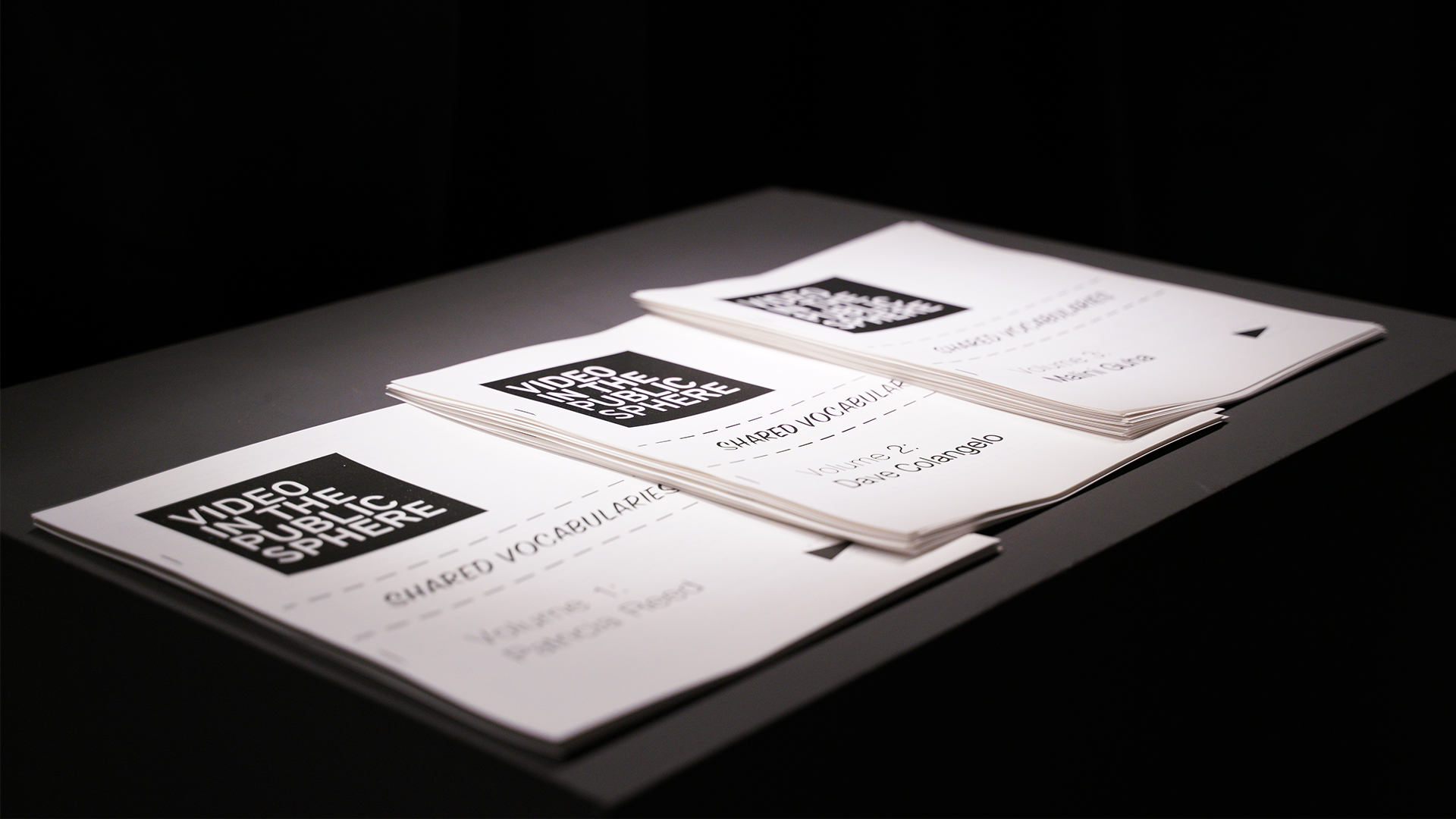
Over the course of Knot Project Space’s Video in the Public Sphere speaker series, we will invite our visiting artists, curators and critics to compile reading lists that relate to their research and/or practice. These reading lists are free to take, and will also be posted online for the duration of our series. In some cases, casual reading/working groups will be formed to discuss specific texts. The creation and distribution of these reading lists represent an effort to generate and sustain critical dialogue in our wider Ottawa community around the notion of ‘publics’ by attempting to establish some shared vocabularies with which to navigate its various complexities.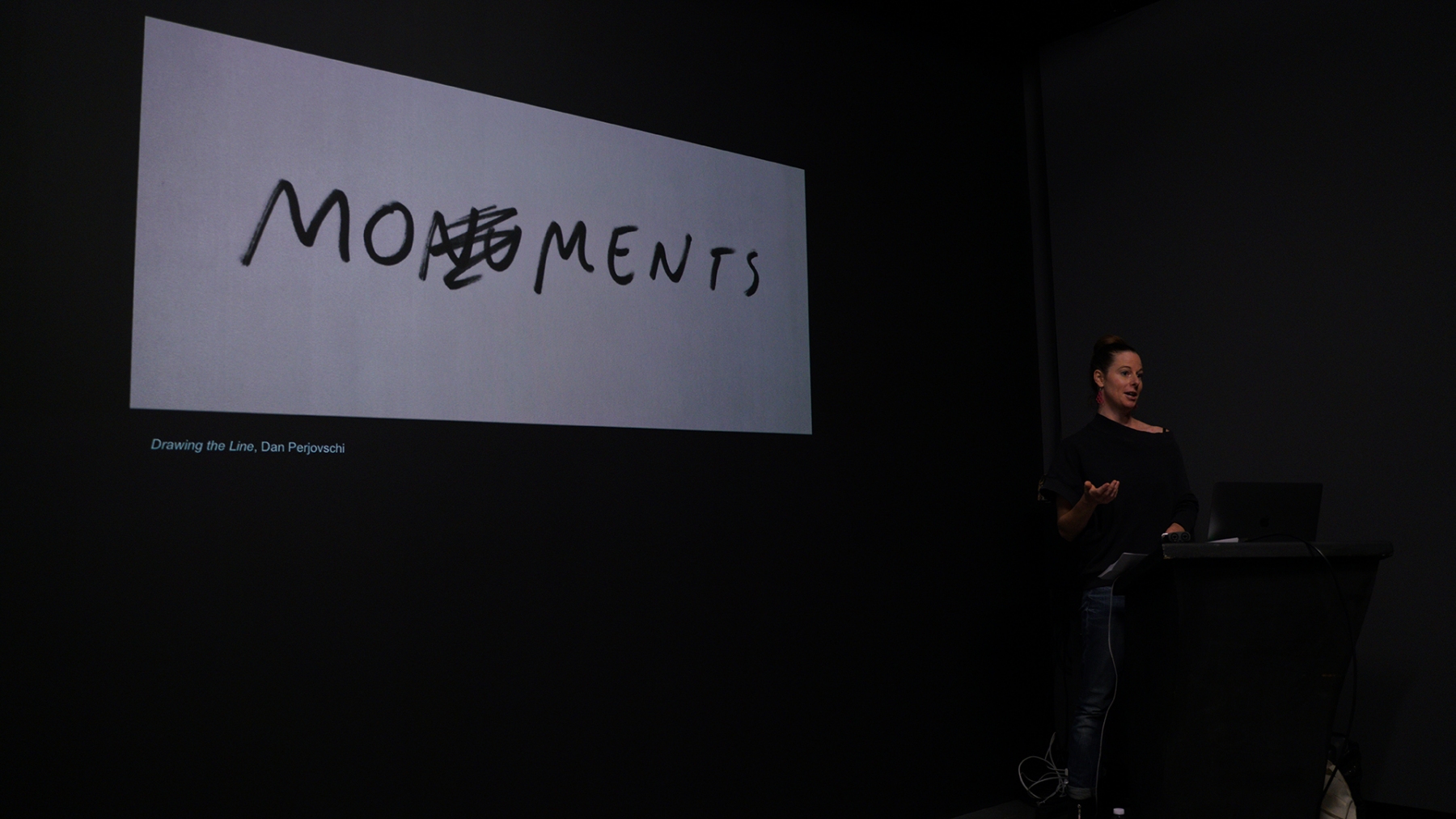
VOL. 1 | Patricia Reed
Sara Ahmed, Affective Economies. (Duke University Press: Social Text, Vol. 22, No. 2, 2004) 117-139.
“How do emotions work to align some subjects with some others and against other others? How do emotions move between bodies?”
Auga Ulrike, Decolonizing Public Space: A Challenge of Bonhoeffer’s and Spivak’s Concepts of Resistance, Religion and Gender. (Feminist Theology, Vol. 24, Issue 1, 2015) 49-68.
“This paper underlines the surprising ways in which subject formation, agency and human flourishing emerge in counter discourses.”
Franco Berardi, What does Cognitariat Mean? Work, Desire and Depression. (Cultural Studies Review, Vol. 11, No. 2, 2005) 57-63.
“Cognitariat is the social corporeality of cognitive labour. But the social existence of cognitive workers cannot be reduced to intelligence: in their existential concreteness, the cognitarians are also body, in other words nerves that stiffen in the constant strain of attention, eyes that get tired staring at a screen.”
Josephine Berry, Everyone is Not and Artist: Autonomous Art Meets the Neoliberal City. (New Formations, Issue 84/85, 2014/2015)
“The historical function of aesthetics and its increasingly central role within urbanism and urban government is interrogated, from modernist architecture’s attempts to design the entire ‘anthrogeographic’ terrain, to community art, creative regeneration schemes and parks, and public and site specific artworks.”
Matthew Carmona, Re-theorising Contemporary Public Space: A New Narrative and a New Normative. (Journal of Urbanism, Vol. 8, Issue 4, 2015) 373-405
“A more balanced view of public space is required, one that recognizes the multiple complex types, roles and audiences for public spaces in cities today.”
Marc Couroux, The Restricted and the General. (The Occulture Blog, www.theocculture.net, 2017).
“Make your countermemes! You might get lucky. But it’s going to start to feel like a futile activity, upping the ante with no foreseeable end to it. And all that time, you’re training algorithms, fine-tuning them with every one of your contributions.”
Simon Dulby, Against ‘Globalization from Above’: Critical Geopolitics and the World Order Models Project. (Environment and Planning, Vol. 17, Issue 2, 1999) 181-200
“The recent World Order Models Project arguments suggest that ‘alternative politics’ is about more than resistance, social movements, and states. These arguments also show in a number of ways that critical geopolitics is about connections and community understood as other than place-bound political entities.”
Peter Dahlgren, Media, Knowledge and Trust: The Deepening Epistemic Crisis of Democracy. (Journal of the European Institute for Communication and Culture, Vol. 25, Issue 1-2: The Liquefaction of Publicness: Communication, Democracy and the Public Sphere in the Internet Age, 2018) 20-27
“Knowledge becomes legitimated via emotionality. Critical rationality and progressive politics must engage more with these developments.”
Jesko Fezer, Design for a Post-Neoliberal City. (e-flux, No. 17, 2010)
“It is necessary to discuss how the crisis of neoliberal ideology may simultaneously be an opportunity to imagine urban concepts that challenge the primacy of economic maneuvers.”
Crystal Marie Fleming, Politics of Blackness, Memorialization of Slavery, and Racial Denials in France. (The Funambulist, podcast: www.thefunambulist.net, 2017)
“We discuss the similarities and difference through which anti-blackness operates in the United States and in France, the internal debates to the French Black community (in particular the Caribbean one) as to how memorialize slavery, the various forms of denials France manifests regarding its historical and contemporary forms of colonialism, as well as the way current French political antiracist activism succeeds in influencing the national debate.”
Melissa Gregg and Gregory J. Seigworth, An Inventory of Shimmers. (Duke University Press: The Affect Theory Reader, 2010) 1-28
“Affect is persistent proof of a body’s never less than ongoing immersion in and among the world’s obstinacies and rhythms, its refusals as much as its invitations.”
Murat Gül, Istanbul’s Taksim Square and Gezi Park: the place of protest and the ideology of place.(Journal of Architecture and Urbanism, Vol. 38, Issue 1, 2014) 63-72.
“Today the Park has become a reference point in Turkish politics where almost every issue is linked to the ‘spirit of Gezi’. It made a modest protest over an inner city promenade into a vivid symbol of political opposition.”
David Harvey, The Political Economy of Public Space. (Routledge: The Politics of Public Space, 2013)
“The idea of the “public sphere” as an arena of political deliberation and participation, and therefore as fundamental to democratic governance, has a long and distinguished history. The imagery of the Athenian agora as the physical space wherein that democratic ideal might be attained has also had a powerful hold upon the political imagination. As a result some kind of association or even identity has been forged between the proper shaping of urban public space and the proper functioning of democratic governance in the public sphere.”
Brian Larken, The Politics and Poetics of Infrastructure. (Annual Review of Antrhopology, Vol. 42, 2013) 327-343
“Although massive infrastructural projects can be used to represent state power to its citizens, the political effects of these projects cannot be simply read off from their surfaces. They generate complicated emotional investments that induce a range of sometimes counterintuitive responses and distinct, if ephemeral sensibilities.”
Ruth Leys, The Turn to Affect: A Critique. (Critical Inquiry, Vol. 37, No.3, 2011) 434-473
“If you don’t understand try to feel. According to Massumi it works.”
Peter Marcuse, The Paradoxes of Public Space. (Journal of Architecture and Urbanism, Vol. 38, Issue 1, 2014) 102-106
“Let me call them “Social Spaces”. And they may be divided between Convening Spaces, where convening for the purposes of political effectiveness may be planned, and Encounter Spaces, where chance meetings and discussion may be take place without prior planning/convening. “Infrastructural Spaces” are also social spaces but in a different sense, not directly political: spaces for transportation, streets, sidewalks, recreational areas, parks, hiking trails, bicycles partially. The term “Third Space” is sometimes in fashion in a similar sense, and often defined as somewhere between public and private.
Brian Massumi, The Autonomy of Affect. (Culture Critique, No. 31, 1995) 83-109.
“Just images, no words, very simple. It was a story depicted in a short shown on German TV as a fill-in between programs. The film drew complaints from parents reporting that their children had been frightened. That drew the attention of a team of researchers. Their study was notable for failing to find much of what it was studying: cognition.”
Angela Mitropulos, Border, Theory, Contract. (Public, Vol. 28, No. 55, 2017) 84-92
“I am boundlessly curious about processes of classification, how those processes become systems, what it is they do in terms of functions, or are seen as failing to do, their scope and techniques, if they have changed and how.”
Chantal Mouffe, By Way of Postscript. (Parallax, Vol. 20, No 2, 2014) 149-157
“Let me stipulate at the outset that from the perspective that I advocate it is essential to distinguish between passions and emotions.”
Aya Nassar, Architecture as Counter Hegemonic Practice: Political Theory and Architecture in Conversation. (www.drawingparallels.blog.com, 2015)
What does a political architecture mean? What kind of architecture for what kind of politics? Is politicization a perversion of the architectural profession?
Andrea Phillips, Making the Public. (Urbanomic: When Site Lost the Plot, 2015) 77-83
1) A public program of talks, performances, symposia, etc. is the thin interface between exhibition and its social and political context. Its aim is to make exhibitions more porous.
2) Public programs are now constitutive of large-scale international exhibitions for reasons of education, inclusion, public and private funding.
3) As the public program becomes more immersive and central, it reveals both the problem of art’s sited relation to its public and its antithesis: the obliteration of the exhibition’s political and educational aim…
Therese F. Tierney, Disentangling Public Space: Social Media and Internet Activism. (Thresholds, Vol. 41, 2013) 82-89
“The ambiguities and contradictions hinted at by Habermas take on new forms in contemporary discourse, as the term public is applied by scholars to new forms of media, new contexts, and new social practices. Granted that social media platforms contain conflicting tendencies, but have they radically altered the philosophical context of the public sphere?”
Mabel O. Wilson, Can the Master’s Tools Dismantle the Master’s House? (The Funambulist, podcast: www.thefunambulist.net, 2016)
“Throughout this discussion, we talk about architecture’s historical and contemporary contribution to the American structural racism against Black bodies.”
Timothy Zick, Speech and Spatial Tactics (Texas Law Review, Vol 84, No. 3, 2006) 1-72.
“In these politically and culturally divisive times, the government has increasingly relied upon spatial restrictions or tactics to control protest and dissent. Those wishing to publicly dissent are now routinely confined to zones, cages, pens, and other designated areas.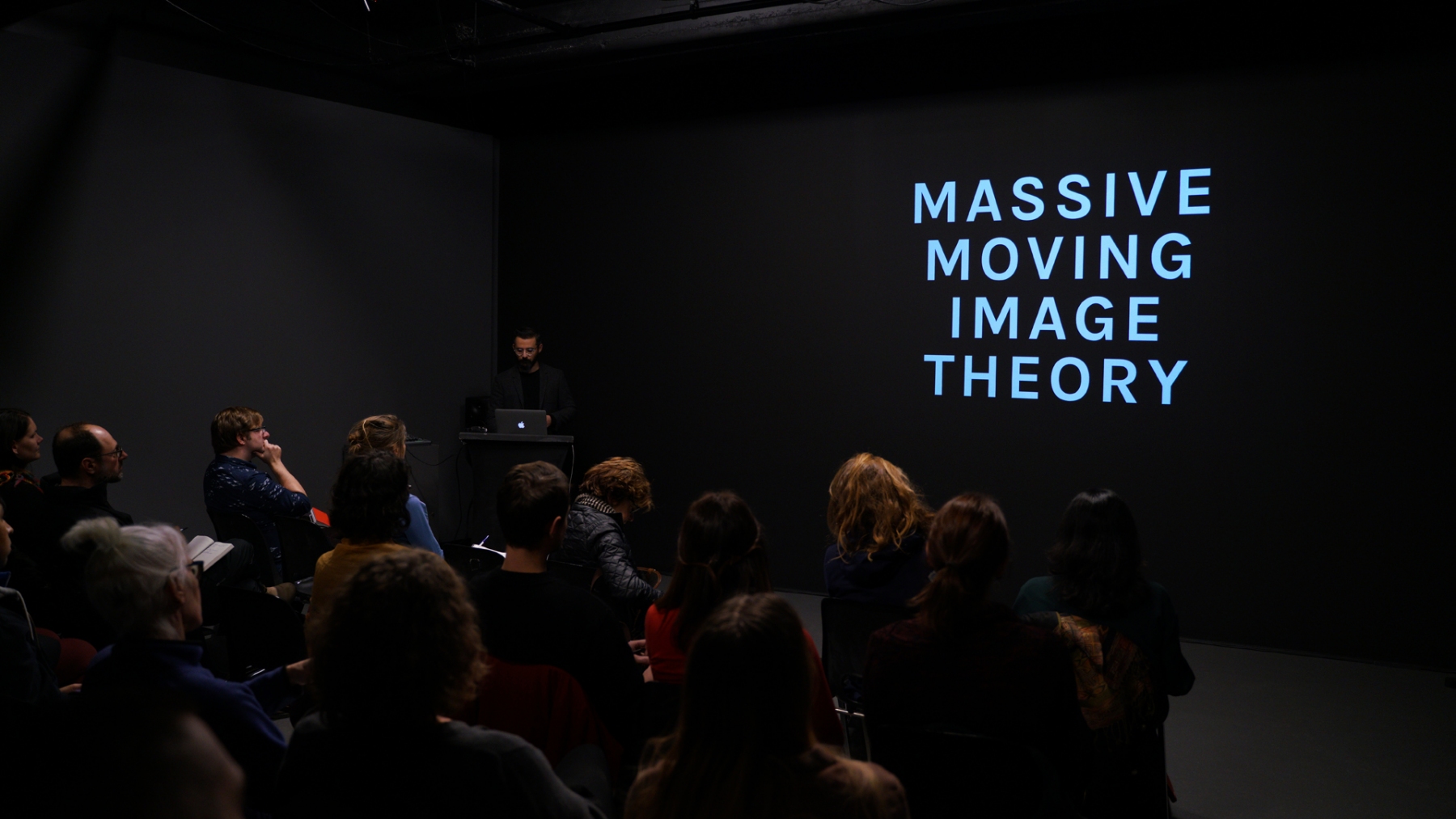
VOL. 2 | Dave Colangelo
Ash Amin, Lively infrastructure (Theory, Culture & Society, 31,7/8, 2014) 137-161.
“Infrastructure is proposed as a gathering force and political intermediary of considerable significance in shaping the rights of the poor to the city and their capacity to claim those rights.”
Susan Bennett, The Peripatetic Audience (Canadian Theatre Review. 140 [Fall], 2009) 8-13.
Peripatetic: traveling from place to place, especially working or based in various places for relatively short periods. Synonyms: nomadic, itinerant, traveling, wandering, roving, roaming, migrant, migratory, unsettled.
Sigfried Ebeling, Space as Membrane (London: Architectural Association, 2010).
“What if architecture was no longer 3D or 2D, mass or surface, object or space? And what if the architectural environment was envisioned not as an abstract continuum, but as a material envelope that grows organically from the human body, uniting its skin with the periphery of a city, a region or a continent, and even the entire earthly atmosphere?”
Foth, M., Tomitsch, M., Forlano, L., Haeusler, M.H., and Satchell, C., Citizens Breaking out of Filter Bubbles: Urban Screens as Civic Media (Proceedings of the 5th ACM International Symposium on Pervasive Displays, 2016) 140-147.
“When designed for more than wayfinding, advertisement or television broadcasts, urban screens as civic media can rectify some of the pitfalls of social media by allowing the polarised user to break out of their filter bubble and embrace the cultural diversity and richness of the city.”
Giedion, Sigfried, Leger, Ferdinand, and Sert, J. L., Nine Points on Monumentality. (In Architecture, You and Me, the Diary of a Development, Cambridge: Harvard UP, 1958) 48-51.
“Modern materials and new techniques are at hand: light metal structures; curved, laminated wooden arches: panels of different textures, colours, and sizes; light elements like ceilings which can be suspended from big trusses covering practically unlimited spans.”
Adam Greenfield, Against the Smart City (The City is Here For You to Use, Book 1. New York: Do Projects, 2013.)
“‘Smart City’ discourse treats the city as an abstraction, misunderstands (or even undermines) the processes that truly do generate meaning and value — and winds up making many of the same blunders that doomed the High Modernist urban planning of the twentieth century.”
Eric Kluitenberg, Public Agency in Hybrid Space. In Search of Foundations for new Forms of Public Engagement. (What Urban Media Art Can Do: Why When Where & How, edited by Susa Pop, Tanya Toft, Nera Calvillo, and Mark Wright, Stuttgart: avedition, 2016.) 73-80
“It starts with the understading that the very nature of publicness has changed through a series of socio-technical transformations. To begin to understand these changes, a deeper sensitivity must be fostered.”
Henri Lefebvre, The Production of Space. (Oxford, UK: Blackwell, 1991)
“We are forever hearing of architectural, plastic or literary ‘spaces’; the term is used much as one might speak of a particular writer’s or artist’s ‘world’. Specialized works keep their audience abreast of all sorts of equally specialized spaces: leisure, work, play, transponation, public facilities – all are spoken of in spatial terms. Even illness and madness are supposed by some specialists to have their own peculiar space.”
Joasia Krysa. Curating Immateriality: The Work of the Curator in the Age of Network Systems. (Brooklyn, NY: Autonomedia, 2006)
“Articulated through two key issues, immateriality and network systems, this book considers how the practice of curating has been transformed by distributed networks beyond the rhetoric of free software and open systems.”
Scott McQuire, The Media City: Media, Architecture, and Urban Space. (London: Sage, 2008)”
Links Myspace to Howard Hughes; trams to cinema; security cameras to exploding buildings; reality TV to Marx; and Lenin on privacy to Kracauer on the mass ornament.”
Scott McQuire, Geomedia: Networked Cities and the Future of Public Space. (Cambridge: Polity, 2016)
“How might the kind of collaborative practices that have flourished in art and online cultures be translated into urban space?”
Kate Mondloch, Screens: Viewing Media Installation Art (Minneapolis: University of Minnesota Press, 2010)
“Media screens—film, video, and computer screens—have increasingly pervaded both artistic production and everyday life since the 1960s. Yet the nature of viewing artworks made from these media, along with their subjective effects, remains largely unexplored.”
Dietrich Neumann, Architecture of the Night: The Illuminated Building. (Munich: Prestel, 2002)
“The art of architectural floodlighting, which first came into existence at the beginning of the 20th century, has seen a worldwide renaissance in recent years. “Architecture of the Night” ia a fascinating, in-depth, and richly illustrated account of the history of architectural illumination in American and European cities.”
Jane Rendell, Art and Architecture: A Place Between. (London: I. B. Tauris, 2006)
“More than a survey, Art and Architecture draws on concepts from disciplines such as feminism, critical theory and cultural geography to explore the relationships between art, architecture, place, space and site.”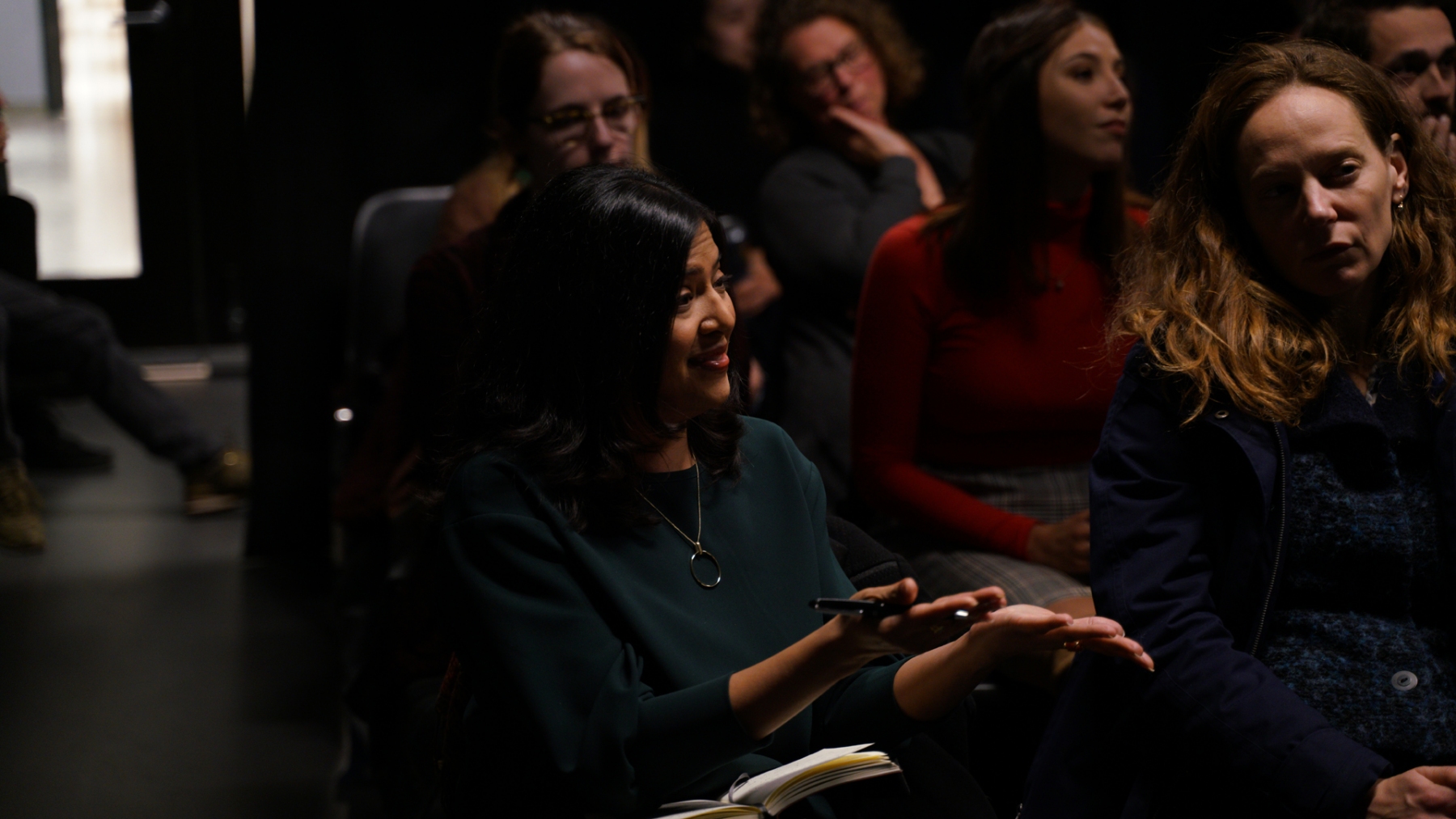
VOL. 3 | Malini Guha
Alan Badiou, Reflections on the Recent Election.
In French: “C’était pendant l’horreur d’une profonde nuit.”
In English: “It was during the horror of a profound night.”
Erika Balson, The Reality-Based Community (e-flux 83, June 2017)
“Have you heard that reality has collapsed? Post-truth politics, the death of facts, fake news, deepstate conspiracies, paranoia on the rise. Such pronouncements are often feverish objections to a nightmarish condition.”
Homi K. Bhabha, Notes on Globalization and Ambivalence. (Cultural Politics in a Global Age: Uncertainty, Solidarity and Innovation, Oxford: Oneworld Publications, 2007) 36-47.
Benoît Rossel, Interview with Eric Baudelaire (https://bombmagazine.org/articles/eric-baudelaire/, 2017)
“EB: As we received the pages of the script, I realized that the script was, as promised, impossible to film.
BR: How does one respond to an impossible script?”
Francisco Casetti and Antonio Somaini. Resolution: Digital materialities, thresholds of visibility. (Necsus: European Journal of Media Studies Spring 2018)
“Since technological progress and marketing strategies based on planned obsolescence tend to constantly push towards higher and higher degrees of resolution of visual displays, the higher or lower degree of resolution of a digital image or display may be interpeted as a sign of its temporal status, of its belonging to a specific phase in the history of digital visual technologies.”
Craig Fortier, Unsettling the Commons: Social Movements Within, Against and Beyond Settler Colonialism (Winnipeg: ARP Books 2017).
“A very important debate that took place within Occupy camps is taking place in a multitude of movements in North America around what it means to claim “the commons” on stolen land.”
Celia Haig-Brown, Decolonizing Diaspora: Whose Traditional Land Are We On? (Decolonizing Philosophies of Education, ed. Ali A. Abdi, Rotterdam and Boston: Sense Publishers, 2011) 73-90.
“Let us begin at the beginning: if we take seriously anyone’s responsibility to consider whose traditional land they dwell in, we might begin with ourselves.”
Bill Schwarz, Living with difference: Conversation with Stuart Hall (Soundings. 37, Winter 2007)
“BS: This new conjuncture, neoliberal globalisation, is an international phenomenon, and has involved the re-militarisation of relationships between the west and the rest.
SH: Yes, globalisation has many aspects, including its strategic and military dimensions. However what I want to emphasise here is its contradictory nature…”
Eve Tuck and K. Wayne Yang. Decolonization Is Not a Metaphor (Decolonization: Indigeneity, Education, & Society 1, no. 1, 2012) 1–40.
“As important as their goals may be, social justice, critical methodologies, or approaches that decenter settler perspectives have objectives that may be incommensurable with decolonization.”
VOL. 4 | Monika Kin Gagnon
Expo 67
Monika Kin Gagnon and Janine Marchessault, eds. Reimagining Cinema: Film at Expo 67 (Montreal & Kingston: McGill-Queen’s University Press, 2014)
André Jannson, Encapsulations: The Production of a Future Gaze at Montreal’s Expo 67. (Space and Culture 10.4, Nov 2007) 418–436.
André Jansson and Amanda Agerkvist (eds.), Communication Clinics: Expo 67 and the Symbolic Power of Fixing Flows. (Strange Spaces: Explorations into Mediated Obscurity, Burlington VT: Ashgate Publishing, 2009) 257 – 278.
Rhona Richman Kenneally and Johanne Sloan, eds. Expo 67: Not Just a Souvenir. (Toronto: University of Toronto Press, 2010)
Donald Theall, Expo 67: A Unique Art Form. (artscanada, April 1967)
World Exhibitions
Walter Benjamin, The Arcades Project [Passangenwerk], (trans. Howard Eiland and Kevin McLaughlin. Cambridge: Harvard UP, 1999) *See especially “Convolute G [Exhibitions, Advertising, Grandville].*
Umberto Eco, A Theory of Exhibitions. (Travels in Hyperreality. Berkeley, CA: UCalifornia Press 1977, Dotzero 4, 1967) 5–10.
Paul Greenhalgh, The Traditions of Expositions Universelles (The Panoramic Dream: Antwerp and the World Exhibitions, 1885, 1894, 1930. Antwerp: Bouwcentrum, 1993)
Paul Greenhalgh, Ephemeral Vistas: The Expositions Universelles, Great Exhibitions and World’s Fairs, 1851-1939. (Manchester: Manchester University Press, 1988)
Penelope Harvey, Hybrids of Modernity: Anthropology, the Nation State and the Universal Exhibition. (London: Routledge, 1996)
Robert Rydell, Fair America: World’s Fairs in the United States. (Washington: Smithsonian Institution Press, 2000)
Robert Rydell, All the World’s a Fair: Visions of Empire at American International Expositions, 1876-1916. (Chicago: The University of Chicago Press, 1984)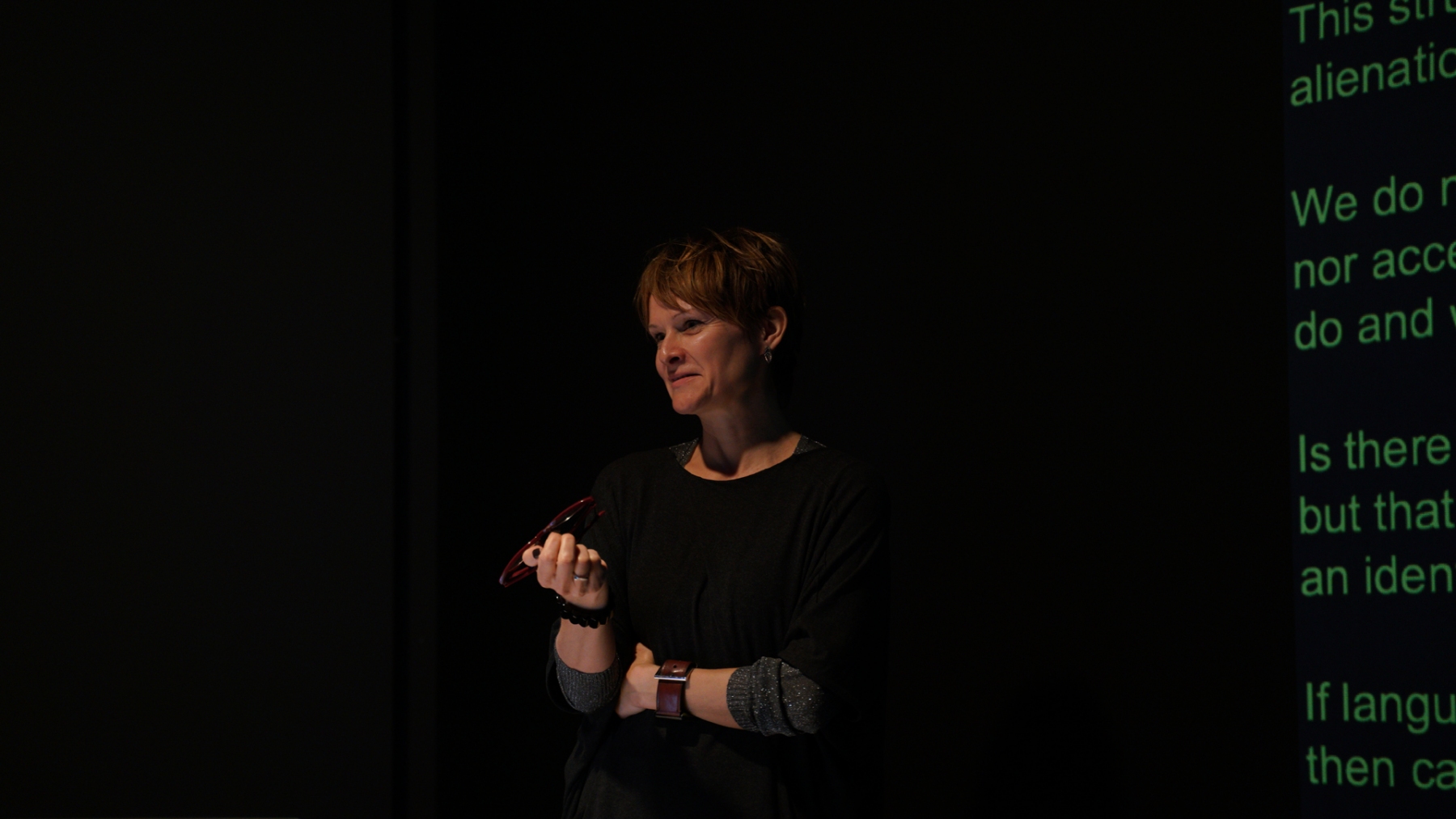
VOL. 5 | Amanda Beech
Texts related to Amanda Beech: Art’s Possible Worlds [talk]
Michel Foucualt, Of Other Spaces, Utopias and Heterotopias. 1967.
“Perhaps our life is still governed by a certain number of oppositions that remain inviolable, that our institutions and practices have not yet dared to break down. These are oppositions that we regard as simple givens: for example between private space and public space, between family space and social space, between cultural space and useful space, between the space of leisure and that of work. All these are still nurtured by the hidden presence of the sacred.”
Roger Caillois, Mimicry and Legendary Pyschasthenia. 1935.
“Beware: Whoever pretends to be a ghost will eventually turn into one.”
Rosalind Krauss, A Voyage to the North Sea, Art and the Post-Medium Condition. 2000.
“At about the same time when Broodthaers was producing this mediation on the eagle principle, another development, with undoubtedly wider reach, had entered the world of art to shatter the notion of medium specificity in its own way. This was the portapak – a light-weight, cheap video camera and monitor – and thus the advent of video into art practice, something that demands yet another narrative.”
Bruno Latour, From Realpolitik to Dingpolitik or How to Make Things Public. 2004.
“An abysmal gap has opened between the “political sphere” and the “reality that people have to put up with”. If this gap is yawning under our feet much like the Icelandic fault line, surely no Dingpolitik can ignore it.”
Friedrich Hayek, Individualism and Economic Order. 1948.
“I propose not only to undertake to defend a general principle of social organization but shall also try to show that the aversion to general principles, and the preference for proceeding from particular instance to particular instance, is the product of the movement which with the “inevitability of gradualness” leads us back from a social order resting on the general recognition of certain principles to a system in which order is created by direct commands.”
Pine and Gilmore, The Experience Economy: Work Is Theater & Every Business a Stage. 1999.
“What consumers look for with rapidly commoditizing services is time well saved, while with engaging experiences what they seek is time well spent. And the easiest way to measure whether or not a retailer is truly offering time well spent? By whether or not it explicitly charge for the time consumers spend with it.”
Stanley Fish. “Rhetoric.” Critical Terms for Literary Study. 1990.
“Rhetoric is the force that pulls us away from that center and into its own world of evershifting shapes and shimmering surfaces.”
Texts related to Amanda Beech: Art and the Conception of Reality [seminar]
Danielle MacBeth, Realizing Reason, A Narrative of Truth and Knowing. 2014.
In mathematics it often happens that a problem can be posed long before the resources required for its solution are, or even can be, developed.
Robert B Brandom, Making it Explicit, Reasoning, Representing, and Discursive Commitment. 1994.
“Putting a sentence forward in the public arena as true is something one interlocutor can do to make that sentence available for others to use in making further assertions. Acknowledging the undertaking of an assertional commitment has the social consequence of licensing or entitling others to attribute that commitment.”
Wilfred Sellars, Philosophy and the Scientific Image of Man. 1960.
“Knowing one’s way around is, to use a current distinction, a form of ‘knowing how’ as contrasted with ‘knowing that’. There is all the difference in the world between knowing how to ride a bicycle and knowing that a steady pressure by the legs of a balanced person on the pedals would result in forward motion.”
David Lewis, The Paradoxes of Time Travel. 1975.
“Time travel, I maintain, is possible. The paradoxes of time travel are oddities, not impossibilities. They prove only this much, which few would have doubted: that a possible world where time travel took place would be a most strange world, different in fundamental ways from the world we think is ours.”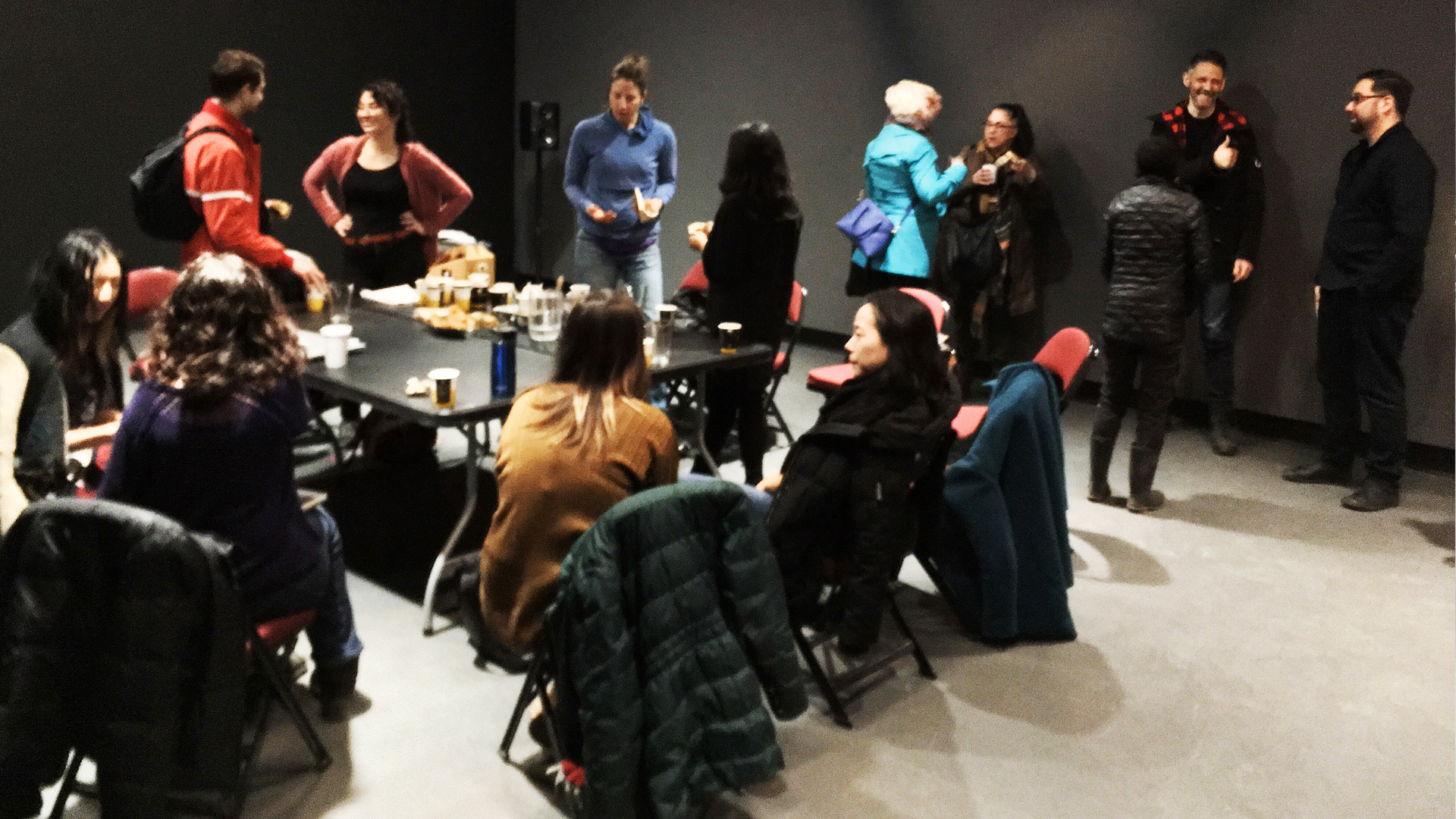
VOL. 6 | Dylan Robinson
Panagia, Davide. The Political Life of Sensation. “Prologue: Narratocracy and the Contours of Political Life”, 1-20. “Chapter 1: From Nomos to Nomad: Kant, Deleuze, and Rancière on Sensation”, 21-44.
Bennett, Jane. Vibrant Matter: A Political Ecology of Things. Durham: Duke University Press, 2010.
Robinson, Dylan. Speaking to Water, Singing to Stone, Music and Modernity Among First Peoples of North America. Wesleyean Unviersity Press, 2018.
Marks, Laura U. Haptic Visuality: Touching with the Eyes. Framework: The Finnish Art Review 2 (2004).
Eve Tuck & C. Ree. A Glossary of Haunting. In S. H. Jones, T.E. Adams, & C. Ellis (Eds.) Handbook of Autoethnography (pp. 639-658).
Anderson, Ben. Affective Atmospheres. Emotion, Space and Society 2 (2009): 77–81.
Rancière, Jacques. The Politics of Aesthetics. Trans. Gabriel Rockhill. London: Continuum Press, 2004.
Robinson, Dylan. Enchantment’s Irreconcilable Connection: Listening to Anger, Being Idle No More. Performance Studies in Canada. Laura Levin and Marlis Schweitzer (eds.). McGill-Queen’s University Press, 2017.
Robinson, Dylan. Intergenerational Sense, Intergenerational Responsibility. Arts of Engagement: Taking Aesthetic Action in and Beyond Canada’s Truth and Reconciliation Commission. Wilfrid Laurier University Press, 2016.